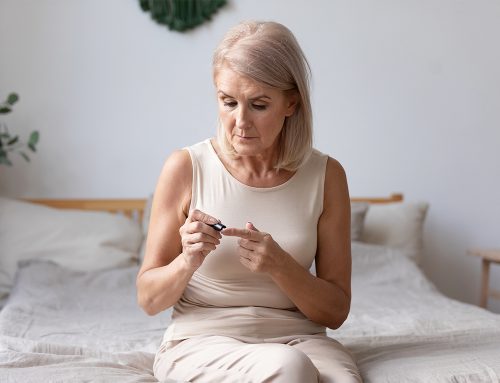Have Diabetes? Self-Monitor Your Blood Sugar Levels For Best Care
Published November 18, 2024

November is American Diabetes Month, a time to get to know your risks for developing diabetes and, if you already have the disease, to understand the importance of monitoring your blood sugar as part of your healthcare plan.
According to the Centers for Disease Control and Prevention, persons with diabetes should talk to their healthcare provider about what their target blood sugar range is, how often to check their blood sugar, what the numbers mean, and how to improve or maintain their blood sugar levels, depending.
Low blood sugar is called hypoglycemia and high blood sugar is caller hyperglycemia.
Why monitor?
Your blood sugar levels can vary throughout the day depending on what you’re eating, your medicines, or if you’re doing physical activity. Maybe you missed a meal or maybe you’re eating more than usual. Maybe you’re stressed or not taking enough insulin. By regularly checking your blood sugar levels, you can see patterns within the levels and better understand how your body responds to certain foods or other factors.
Keeping your blood sugar in a target range is important, because if it’s too high or too low diabetes complications may result. Your target range may be different based on your health status, your age and your type of diabetes, so always check with your healthcare provider about what’s best for you.
How to monitor?
To check your blood sugar levels, you’ll most likely use a glucometer or a continuous glucose monitor (CGM). The difference between the two is that the former measures the sugar in a pin prick of your blood using a lance and a test strip; the latter uses a sensor under the skin. Although the CGM has the ability to measure your blood sugar every few minutes, it’s usually recommended to use a glucometer from time to time to double-check the accuracy of the CGM readings.
Generally, blood sugar levels are checked when you first wake up before you eat or drink anything, before a meal, two hours after a meal and at bedtime. Depending on your type of diabetes – type 1 or type 2 – your doctor may ask you to check your levels more frequently.
Also, have one of your loved ones learn how to use the glucometer, too, in case you’re sick or not able to test yourself.
Subscribe to our monthly emails for Your Well-Being! Get health and wellness tips, hospital news, staff spotlights, career opportunities, our cafe menu and more, sent right to your inbox!
DISCLAIMER: No content on this website, regardless of date, should be used as a substitute for direct medical advice from your primary care provider.


